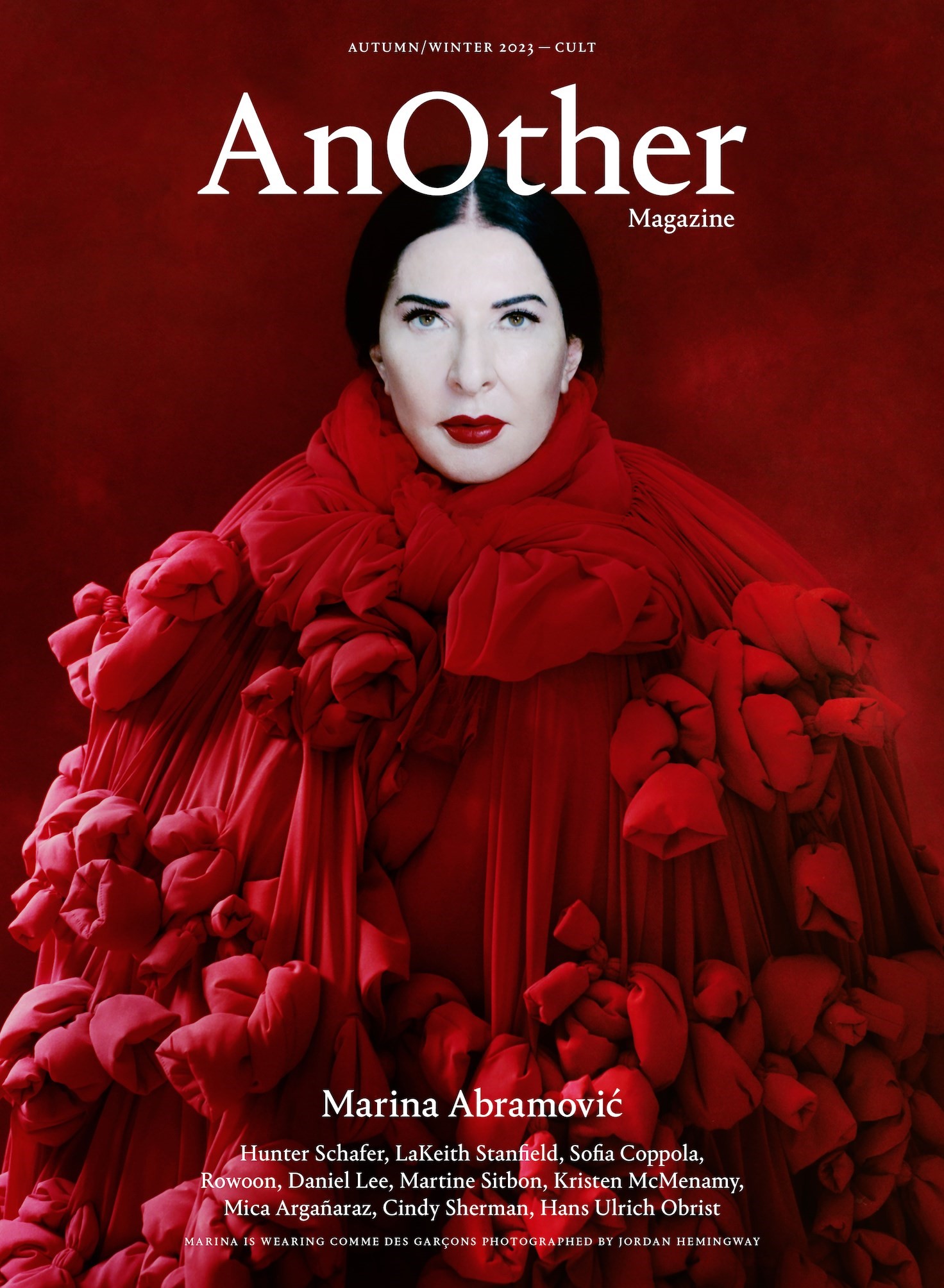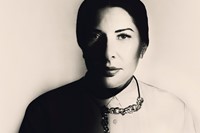This article is taken from the Autumn/Winter 2023 issue of AnOther Magazine:
This is my 18th conversation with Marina Abramović. It’s a conversation about some big themes of art – death, hope, life, fear. And these themes are, of course, at the core of her practice.
Our first recorded conversation took place on a bullet train from Tokyo to Osaka in the 1990s. We travelled together through Japan for a conference at the Center for Contemporary Art Kitakyushu. Since then there have been conversations on trains, in train stations, in cars, hotel rooms, over games of dominoes, in opera houses and so on.
The next instalment of our conversation will take place while she crosses the sea by boat to come to Europe for her show at London’s Royal Academy, opening in September. As we discuss here, she cannot currently travel by plane. This will be my first boat conversation – a conversation on the slow-move.
Marina never works on just one thing – it’s like in quantum physics: there are always multiple parallel realities, many dimensions to her work at one time. While she is focusing on the Royal Academy show, her institute’s curated group show at the Southbank Centre’s Queen Elizabeth Hall and her opera, 7 Deaths of Maria Callas, at English National Opera will also open in London this autumn. Then there are several artist books and publications, even her own line of beauty products incoming – her own brand, in a way.
It was, of course, very magical to sit down with her for this Zoom, to add another chapter to our ever-growing collection of conversations.
Hans Ulrich Obrist: So, you’re teaching a Pina Bausch class right now, the performance of which will have happened by the time this magazine is out. Of course, you never met Bausch but you share many commonalities – she had a huge impact on 20th-century dance, theatre culture and performance with a focus on the body, communicating emotionality through physicality. Teaching is also an important part of both of your practices. How will the Pina Bausch and Marina Abramović methodologies come together on this occasion? And how did this come about?
Marina Abramović: I got a phone call from Salomon Bausch, Pina’s son, early last year. [The Pina Bausch Foundation] asked me if I wanted to teach a class as the first Pina Bausch professor, because they and the Folkwang University of the Arts in Essen had started this professorship in her honour, with the support of the region’s culture minister. They wanted students from all kinds of disciplines. For three days I couldn’t decide – but my connection to young people and teaching is so passionate that I could not say no, even if it’s crazy to travel from America to Essen and back.
We got 156 applications from individuals spanning the most disparate fields, from dance, opera, jazz, flute, violin and composers to acting and physical theatre. Some of the applicants worked in video and photography, others were music leaders and modern composers. We selected the 26 successful candidates, they came up with all kinds of ideas, we tested their concepts and then brought them to my institute in Karyes, in the Peloponnese, Greece, where we did the Cleaning the House Workshop. Once there, they had five more days of training with no food nor talking during the workshop, they had to do very difficult physical and mental exercises.
The show is six hours of performing for nine days at Museum Folkwang in June and July – which most of these artists have never done before. Everybody was so enthusiastic to get out of their comfort zones. I am doing everything virtually since my doctors have forbidden me to travel for several months. I’ve never missed a performance in my life, I’ve never missed selection, any kind of commitment or the opening of one of my shows in my entire career, which is 55 years long. This is the first time because of this inability to travel – it drives me crazy.
The students were international, coming from Romania, Brazil, Korea, Belarus, Hungary, Italy and Germany. I didn’t want to tell them what to do. They had to come up with ideas and I wouldn’t tell them if those ideas were good or bad. I wanted them to find out whether things worked or not just by doing.
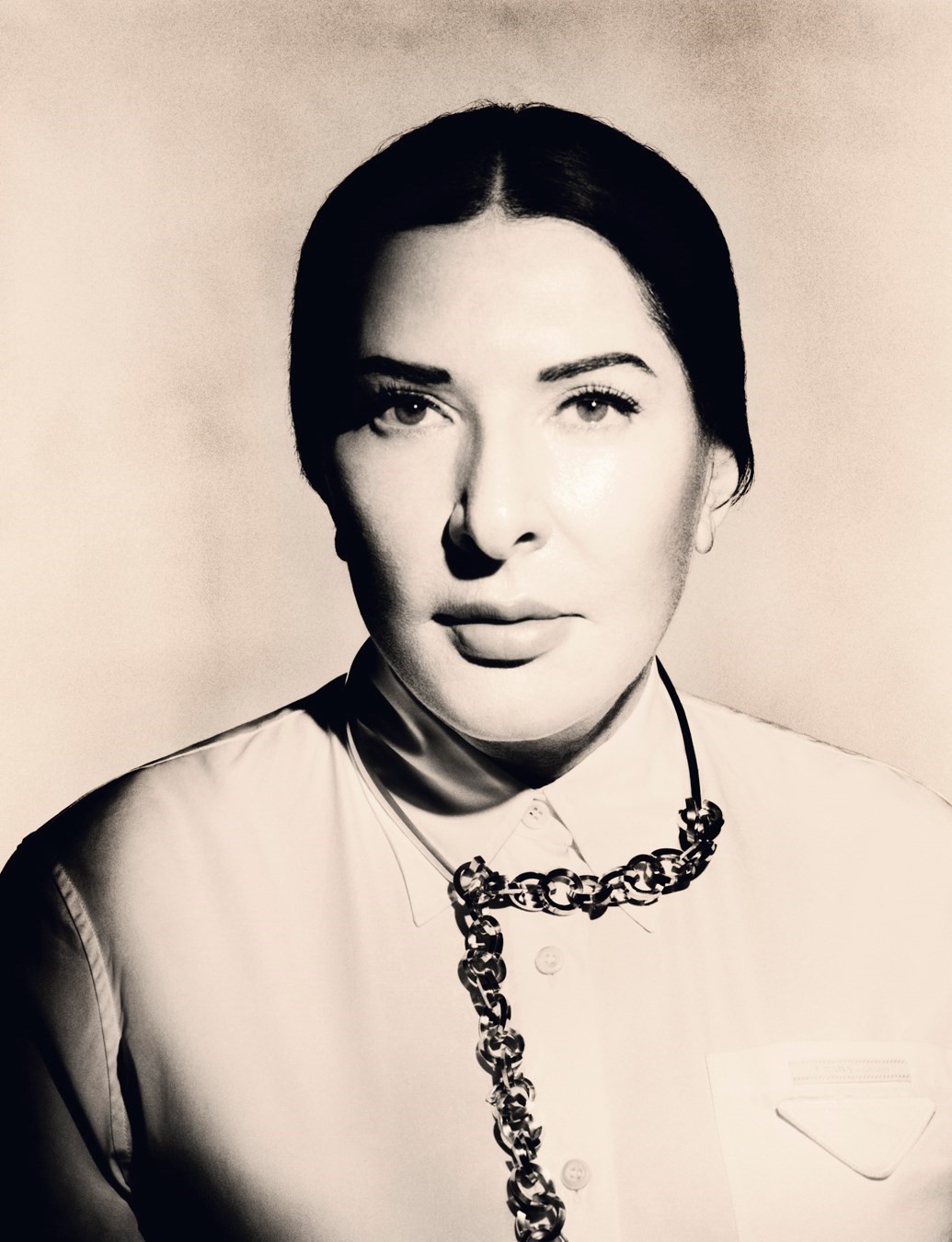
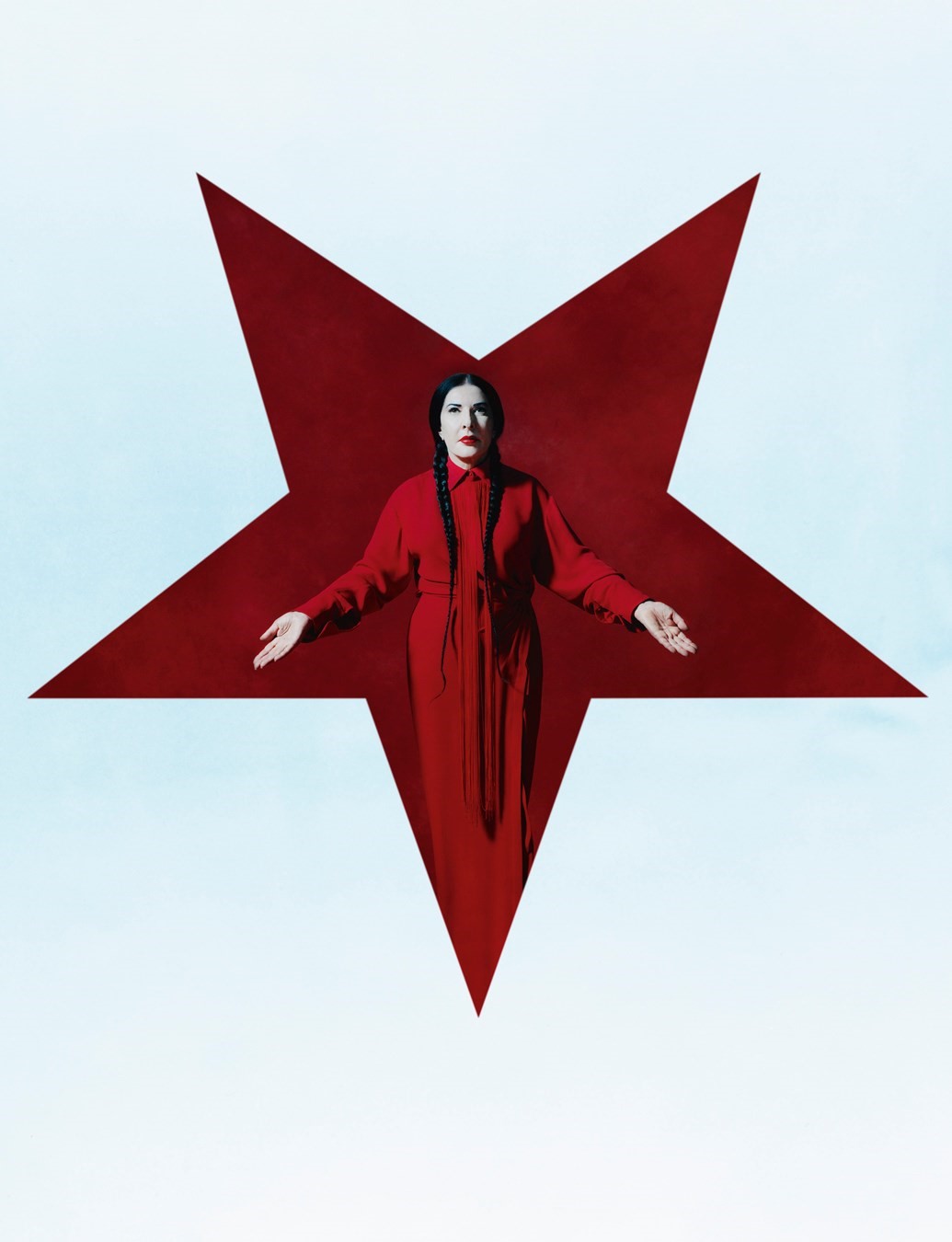
HUO: In a way, your method of teaching leads to the Rilke question. Rainer Maria Rilke wrote this lovely little book, Letters to a Young Poet – what would be your advice to a young artist today?
MA: It’s always the same thing. Don’t be afraid of anybody or anything. Don’t give a shit about what anybody says and don’t be afraid of making mistakes. Because if you want to try something new you also must acknowledge that it could be a huge mistake – if you don’t do that, you can never create anything new.
I always have this same attitude with artists who throw the ideas they hate into the rubbish and keep the ones they like on the table. We should always look at the ideas that are in the rubbish, because they’re the ones we’re afraid of, they’re the ones we don’t have the guts to make. It’s important for the young ones to experiment. I’m very nostalgic about the time of dadaism, Picabia, surrealism. There was so much enjoyment in playing, being a community together, making movies and doing crazy stuff without really classifying whether a work was a great art piece or not.
But that joy of play is what you make great art out of. Sometimes it can happen as an accident – it can happen in so many mysterious ways.
“We should always look at the ideas that are in the rubbish, because they’re the ones we’re afraid of, they’re the ones we don’t have the guts to make” – Marina Abramović
HUO: Of course you also find new ways of disseminating the Abramović methodologies. You made a beautiful box of cards that teach some of them, which I found in the front room recently. It made me think a little bit of when you wrote instructions for my travelling exhibition, the Do It project, which we started in 1993 and has been realised in 169 cities so far. The idea of disseminating beyond the classroom, to everyone – it’s interesting, no?
MA: It is so important to somehow embody the freedom of expression. That again deals with fear because we’re so afraid of what somebody might or might not say. But it’s so necessary to put the crazy ideas all together and see what comes out. Especially right now.
And to have the possibility of working together. Even a performance is community work. Not only do you need the community, a public to perform to, but you also need friends to help you perform. Somebody needs to take care of lights, sew the clothes, push the objects or film. It’s always collaboration.
HUO: Has Billy Zhao, your assistant, left your studio?
MA: No, no, no. Billy is absolutely essential. I only wanted to do Pina Bausch’s class because of Billy. Billy and I created the show together – I’m going to send you the images of the posters now. The name was inspired by the name of your and my Serpentine show, 512 Hours. They wanted to call the show 54 Hours, because it is 54 hours long. They count the hours now, it’s a trend.
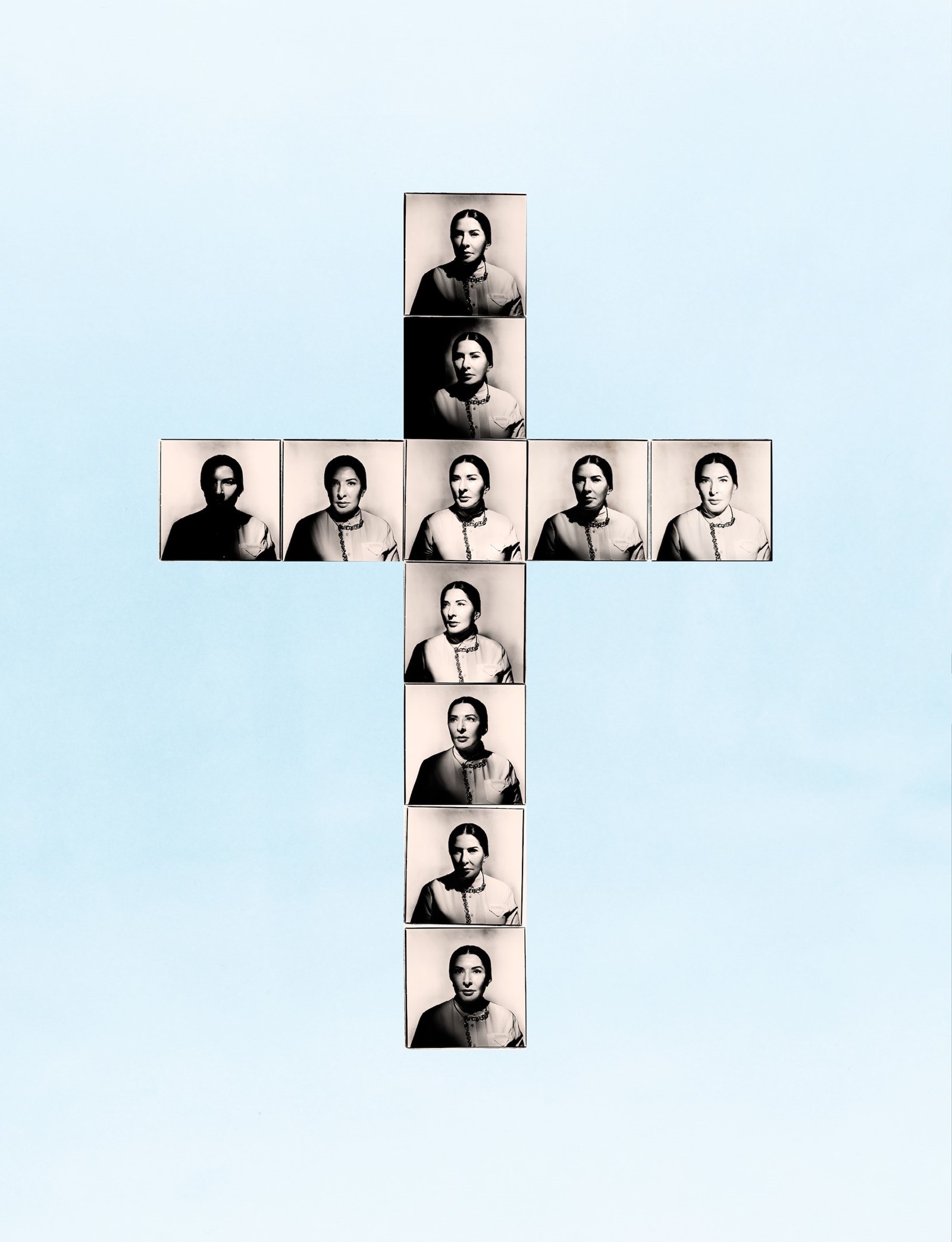
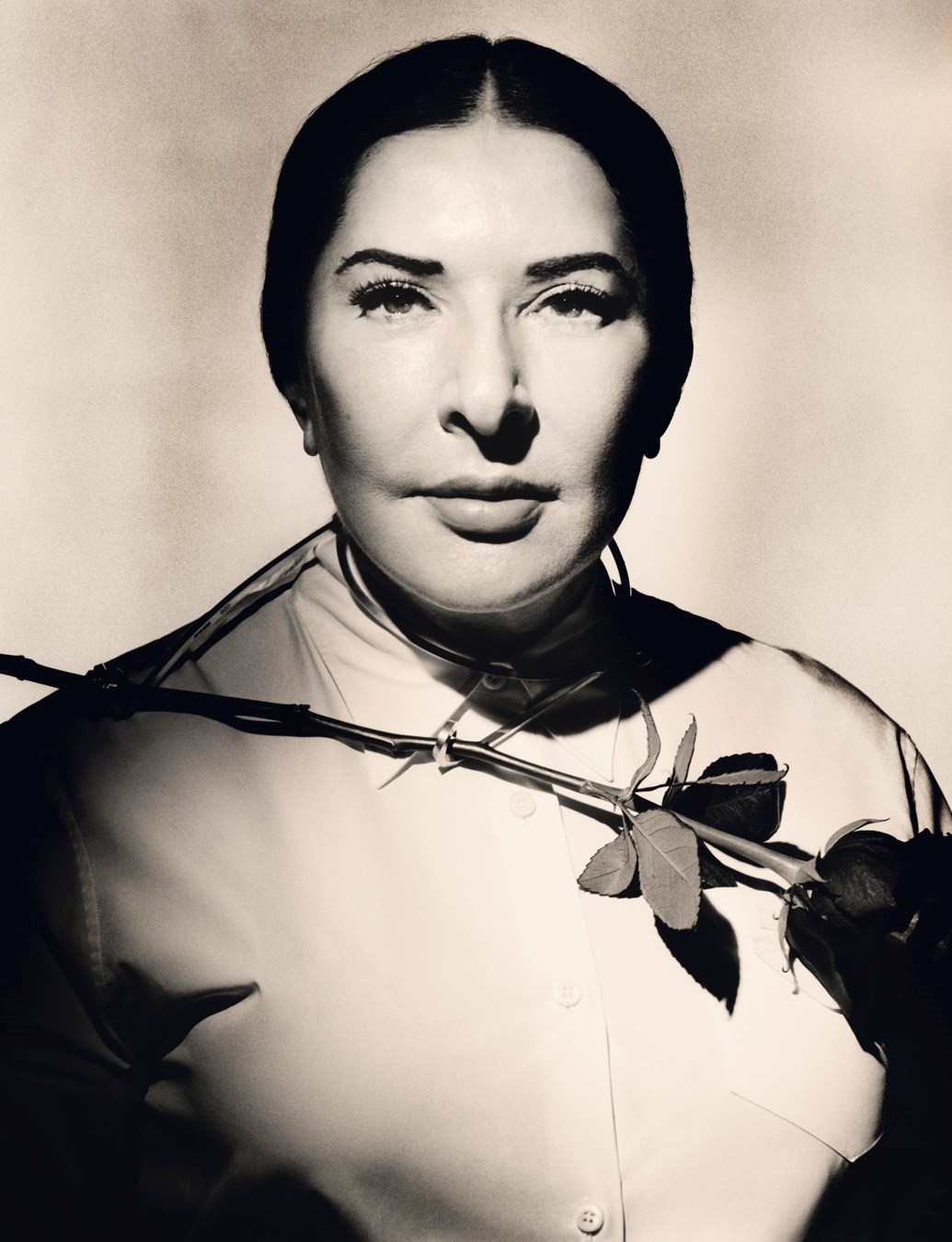
Both artists on the posters are professional opera singers who have never done art performances in their lives. The first woman holds her head under water and then sings – on repeat. The other one is peeling potatoes with the public – there will be about 12 people peeling potatoes. And then he stands up on the chair and sings some Slavic folk songs. But he’s a soprano, that’s the strangest thing – when his voice comes out of his body it’s an incredibly high-pitched, female voice.
And then the potatoes will be taken in a paper bag to the Museum Folkwang restaurant, where they will make potato soup.
HUO: So you’ve curated the Essen project – as an artist. That’s another part of your work. Many important historic exhibitions have been curated by artists. Of course you curated the Guggenheim group show. It was essential, in terms of restaging performances. And then we did the project in Manchester, together with Alex Poots and Maria Balshaw, called Marina Abramović Presents. It was a show about long durational work and was presented at the Whitworth as part of the Manchester International Festival.
MA: To me, it’s a very important result. I want absolute results – you can see the result with these artists we train. They come with their own ideas but it’s important to confront them with a real public, give them the infrastructure of the museum, to give them a real catalogue with a real writer, to really understand what it means to be in the real world, the responsibility.
When I train them to perform, I never train them to perform full time. If they are supposed to perform this piece for six hours, I only train them for three and they ask me, “Why don’t we try six?” But I would never do that. You don’t train for six hours, because you will immediately be discouraged by your limits.
“Some old ladies were coming up the staircase in the Opéra Garnier in Paris and, looking at each other, said, ‘Ce n’est pas classique.’ I said, “‘Oh my God, that’s the best compliment I can get’ – Marina Abramović
But when you are in the public and in front of the real audience, like a museum audience, the extra three hours come from your own energy. The public gives you this energy, and that’s something you learn only by doing it. So rehearsing is only halfway.
Can I show you now my takeover of the Queen Elizabeth Hall at the Southbank Centre?
HUO: Is that independent of the Royal Academy?
MA: Totally independent. There are three things happening in London this autumn. First, the Royal Academy show, and in November there’s my opera, 7 Deaths of Maria Callas, at English National Opera. Before that, in October, there’s the Southbank presentation of the artists I work with, all long durational. It’s important to show all aspects of the work. The legacy is mine – we’re showing 12 parties, very different work from different countries. Some we’ve worked with before, some not. And again, it’s long durational work. It’s original work for them, nothing to do with me at all.
HUO: Can you say a few words about the opera? I saw it in Paris.
MA: Oh my God, the opera. We had the best evening ever.
HUO: I came to your opera and then we played dominoes in your hotel room. But let’s talk about the opera.
MA: I love dominoes. OK, so it’s interesting for an artist to take on something so old-fashioned. If ten years ago somebody told me I would do opera I would think, “You’re crazy. I would never take such a medium.” But then I was thinking, why not? Let’s take it and let’s kind of renew this old idea of opera. Let’s make a world that is a projection, where there is acting, light, performance, real music and so on. But also, only concentrate on dying, on the actual ending of opera. You sit in every opera house and you wait until somebody dies, and then there’s this great crescendo. So why don’t we just take the ending and stretch it all the way through?
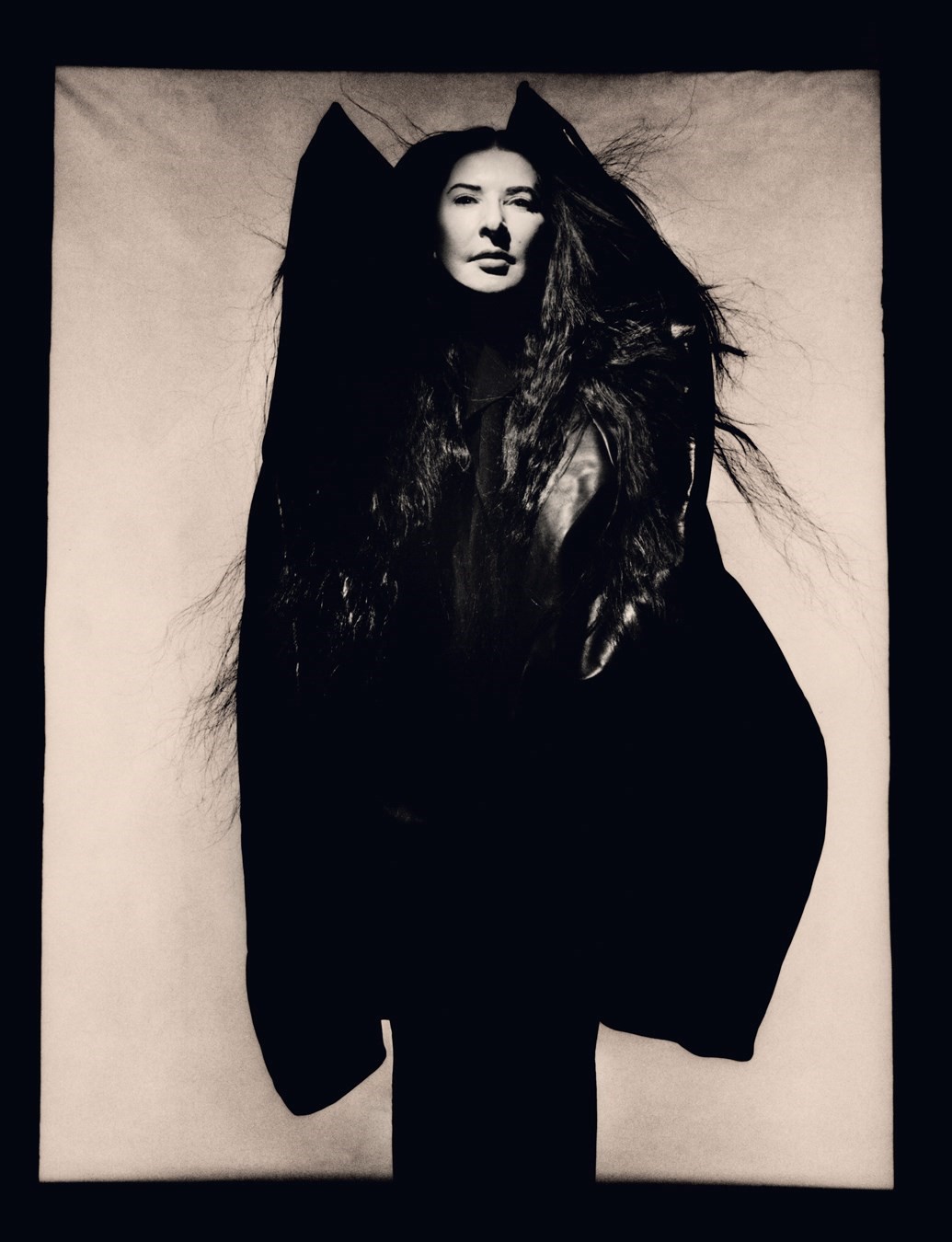
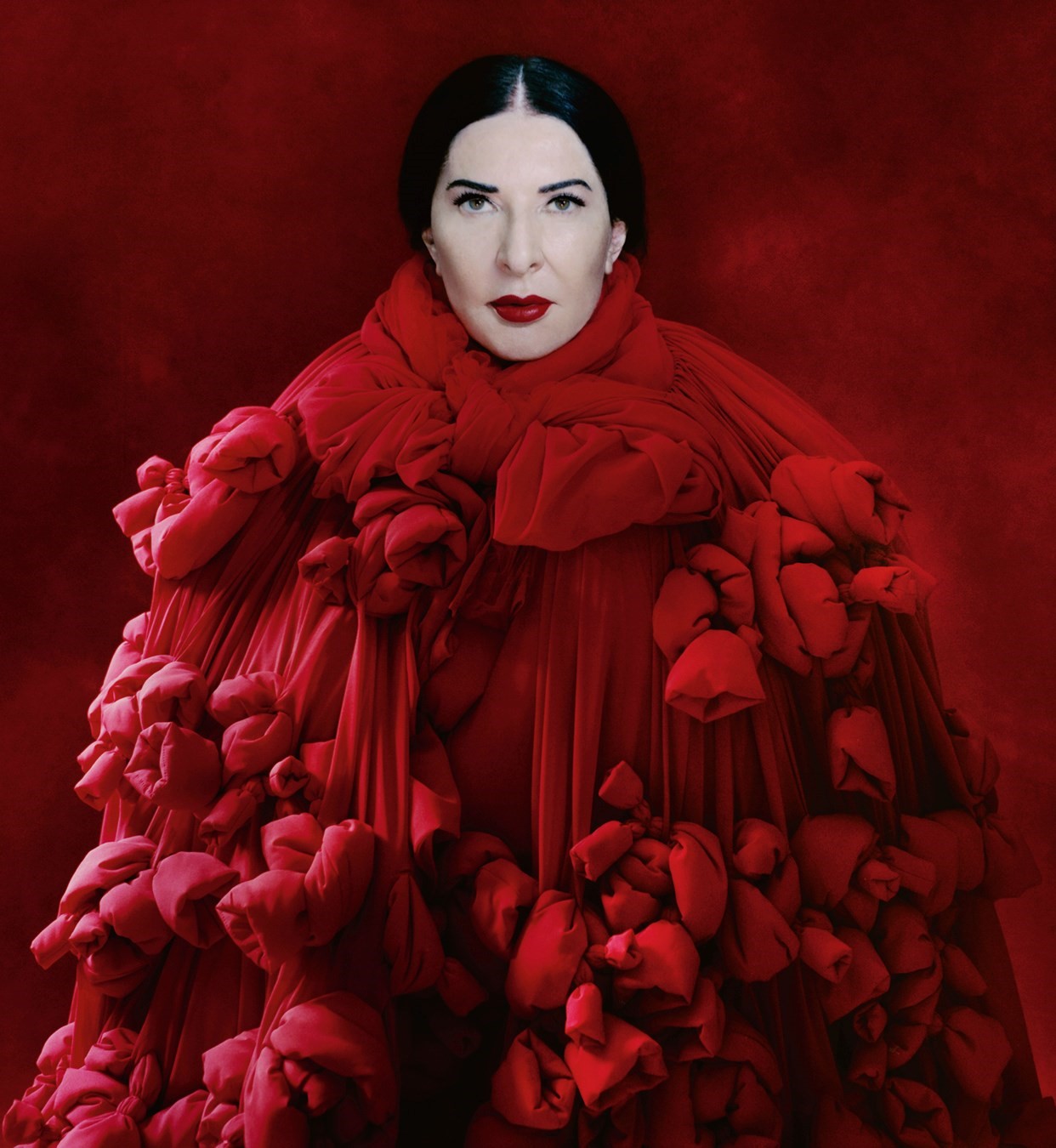
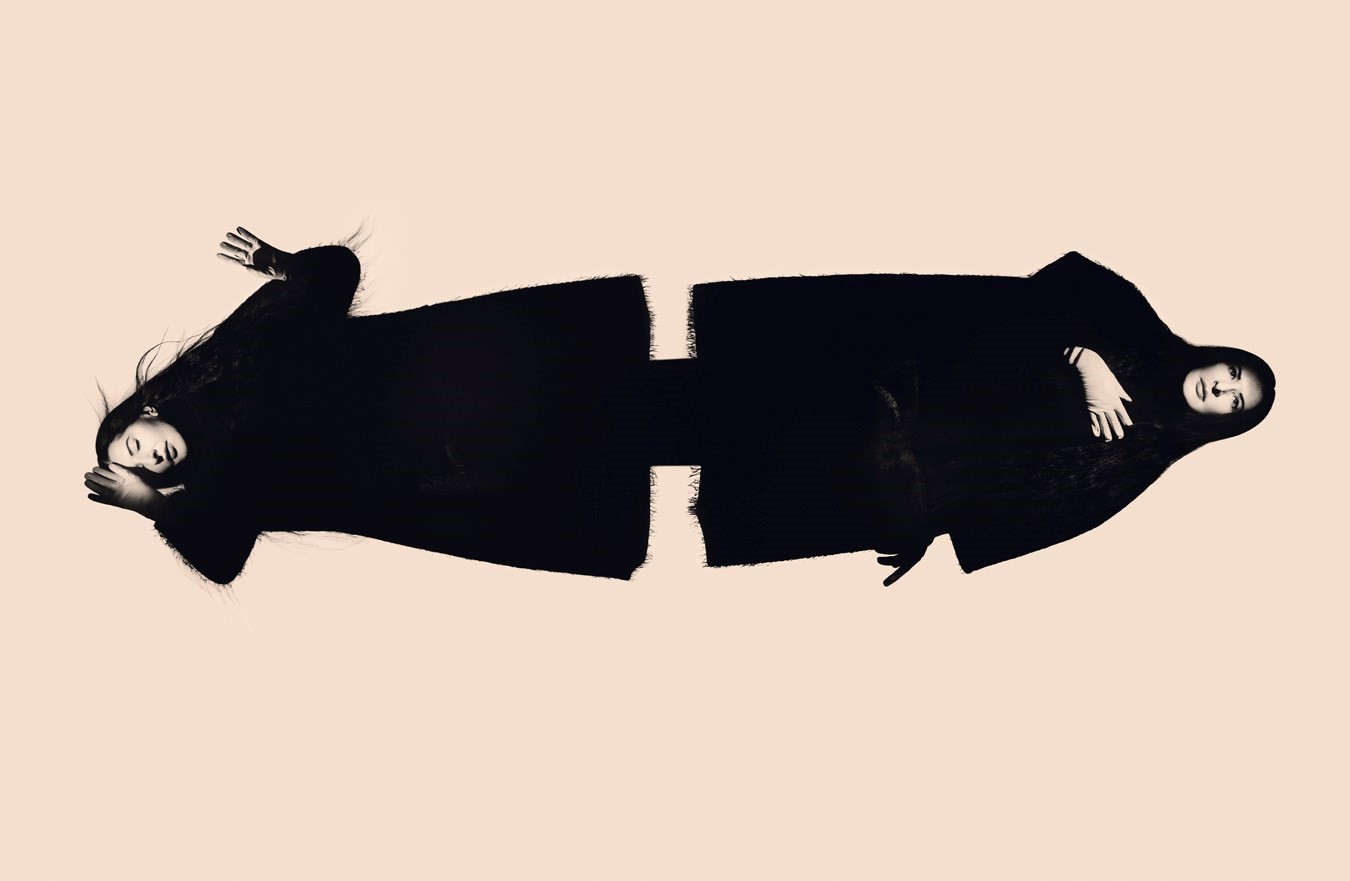
I was also very aware of the young public. I want super-young people in the audience that would never go to an opera. I really succeeded, because so many of the audience members have never been to an opera before. And I remember my best compliment – some old ladies were coming up the staircase in the Opéra Garnier in Paris and, looking at each other, said, “Ce n’est pas classique.” I said, “Oh my God, that’s the best compliment I can get.”
HUO: And who gave you the idea for this opera about death?
MA: This is something I had 30 years ago, when I was living in Paris. [The art historian and curator] Jean-Hubert Martin gave me a grant and I was living for one year with the grant, and then another three years teaching at the Academy of Fine Arts in Paris [Académie des Beaux-Arts]. So I spent four years in total in Paris. At the time you could give projects to the minister of culture and one of my ideas had the title How to Die.
The idea was to go to Serra Pelada, the famous gold mine in Brazil, which is now closed. I saw the photographs by Sebastião Salgado, which were incredible, so disturbing – people going down to these pits and dying every day. I was thinking about the idea that when you see people dying on television, it’s always the same feeling, uneasiness, and you immediately switch off and move on to something else. And if you see an opera or film, or some old theatre piece, where the people die in a very aesthetic and moving way, you identify with the character, you cry, and you always leave this part to the end.
But if you see war or some terrible images, you immediately switch off the television. So I was thinking if I go to Serra Pelada, and film somebody dying there every day, filming the real fullness of people dying, and then switch out the three minutes of opera dying, then create this crazy video, How to Die, it would be amazing. So I went and filmed the people there and brought it to Paris, but the ministry of culture didn’t accept it, so it never happened.
“I never want to do anything close to even thinking about dying. Now I feel like I’m given a totally new life. I’m given the chance” – Marina Abramović
Then, 30 years later, I was thinking, “Maybe I should just ask some film directors.” I wanted to give each director a different death and play in each of them, like [Alejandro González] Iñárritu or [Roman] Polanski. I had a really great list of people. It took me four years of talking to these people and discussing the idea, but it was impossible to get them all together to film this.
Then I got an invitation from the director of Bavarian State Opera, who said to me, “Would you like to do something with Barbebleue [Charles Perrault’s fairy tale Bluebeard]?” And I said, “I don’t give a shit about Barbebleue, but I have a great project for you – the 7 Deaths of Maria Callas.” It took him 40 seconds to say, “Yes, let’s do it.”
HUO: I do lots of collaborations with artists in their nineties or hundreds. I once did something with someone who was 108. But you’ve met somebody who was 110 years old and who told you, “The most important thing in life is how we enter it and how we exit it.” I thought that was amazing.
MA: And I still think it’s very important. And I did almost exit, but I’ve returned.
HUO: Could you talk about this experience you’ve just gone through?
MA: It’s incredible how you take life for granted. I had a simple surgery on my leg – on my meniscus – a few days afterwards I lost consciousness, I could not breathe. I was taken to the emergency room of the hospital and was diagnosed with a lung embolism and needed to be hospitalised for almost two months with unbelievable difficulties, three operations and internal bleeding, losing too much blood and so on. I was mostly unconscious, with opiates – I was here and there in my mind.
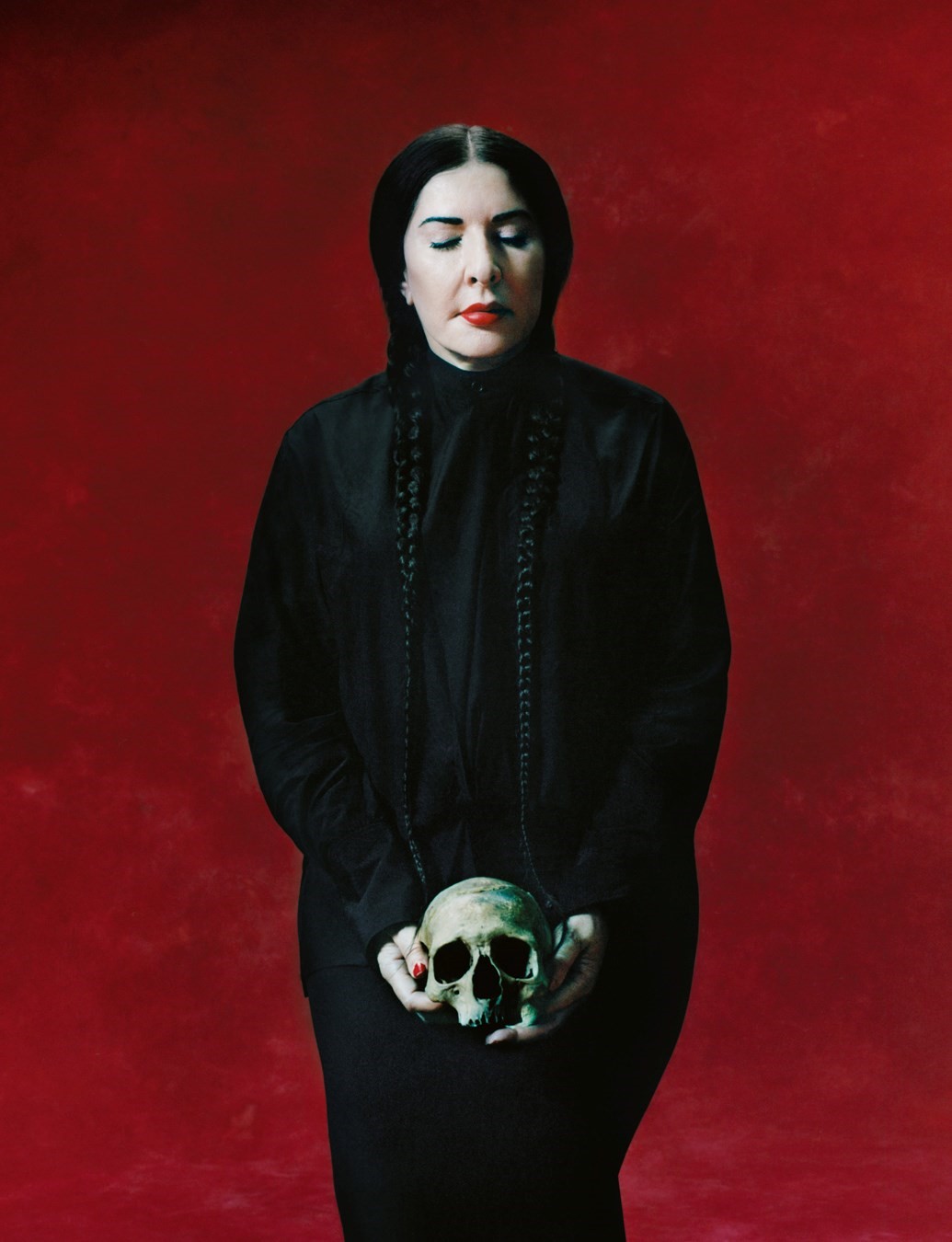
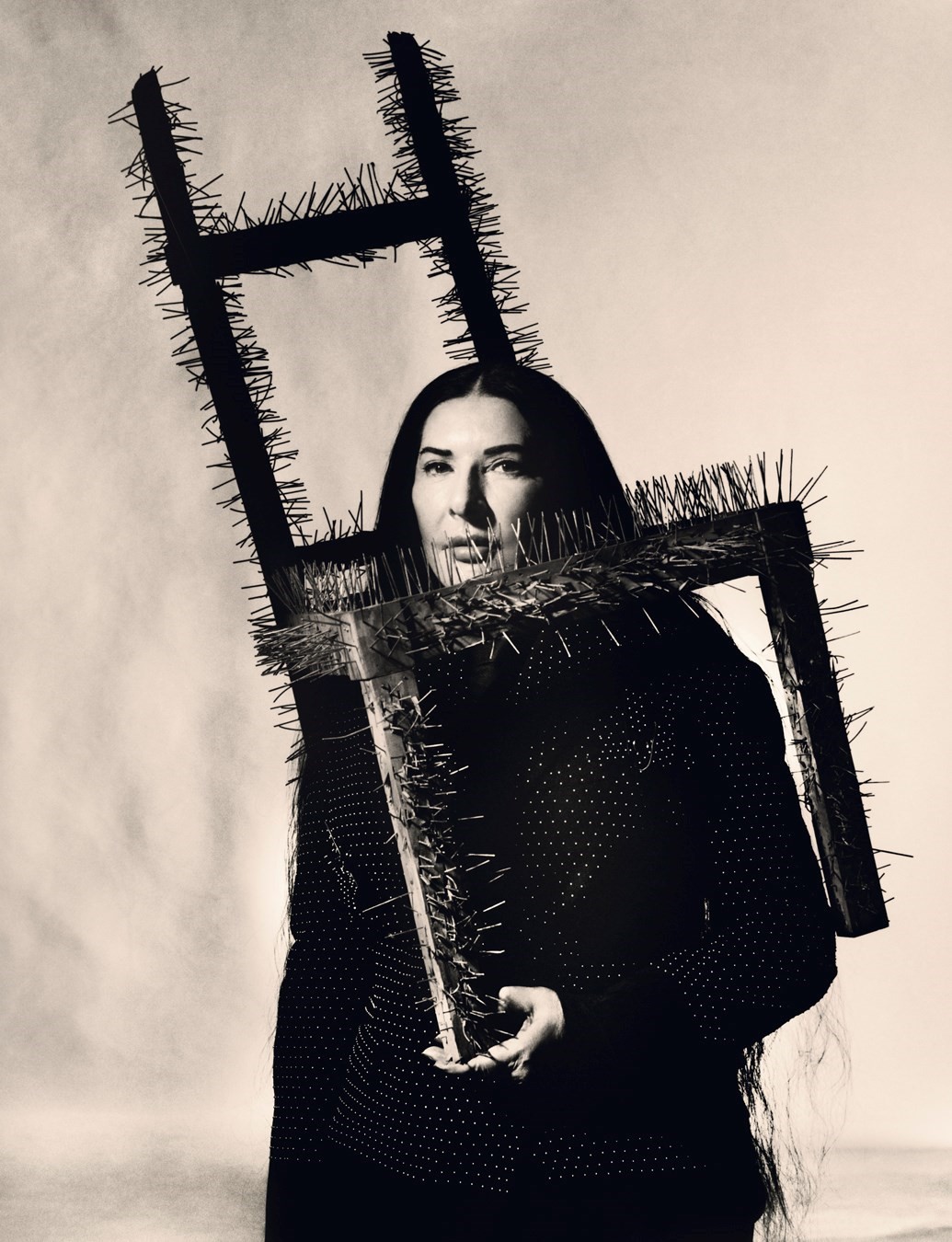
The experience shook my entire existence. I could not believe that I was so close to dying. I kept asking myself, “What happened?” And I had a strange answer – I saw that in my old life I was always playing with death. I made The Life and Death of Marina Abramović with Bobby Wilson, as my own funeral. I was playing with death constantly, carrying the skeletons, washing skeletons, dealing with it in so many ways in the work. And then, finally, 7 Deaths of Maria Callas, where again I played dead. And I was thinking, “Maybe the universe said to me, ‘You know what? Fuck this. You really want to die? Let’s see how that works.’” And then this happened.
And now I’m all about living. I never want to do anything close to even thinking about dying. Now I feel like I’m given a totally new life. I’m given the chance.
HUO: Yeah. The next 30 or 50 years have started. And I want to ask you a little about the show at the Royal Academy. It follows the show we did together at the Serpentine – that exhibition was part of a line of exhibitions you did at MoMA with Klaus Biesenbach, which really pushed the practice to go outside the material.
Can you talk a little bit about the London experience almost ten years later? Julia Peyton-Jones and I gave you the keys to the building at the Serpentine.
MA: First of all, the show at the Royal Academy was supposed to be in 2020 – it was postponed by three years and I’m so glad because the show looks totally different now. I had three years of reflecting, three years of changing and three years of understanding what the show should be. We decided with Andrea Tarsia, the curator, to create 12 spaces, each space for one type of research I work with.
Because, at MoMA, the show was really focused on performance. Then at the Serpentine, it was really focused on the performance to get to this idea of immateriality. Now, from that immateriality, it’s about understanding that the public is the work for me, and the public has to go through certain experiences in performance. And then there’s legacy.
If you look at my work it’s not just performance, there are so many other elements, there is all this spirituality, nomadic travelling. There is research in nature, there are things that I created, objects, but then there is also observance of objects.
“The show at the Royal Academy was postponed by three years and I’m so glad because the show looks totally different now. I had three years of reflecting, three years of changing and three years of understanding what the show should be” – Marina Abramović
At the beginning of the show, there are the physical limits on the body. In another room, transitory objects. In another, nature as a source of inspiration. Another will be about the absence of the body. Another will be called Private Archaeology. They’re all different themes. It’s not chronological in any way – you can see works from the 1960s next to work from 2023. This really works for me, because the work is not linear, it is about rituals going in an eclipse.
HUO: Amazing. So it’s actually not a retrospective, the invention of the show happens in the extreme present, we can say.
MA The works have a conversation with each other.
HUO: And you have a lot of new work in the show?
MA: Yes. Lots of new work nobody has ever seen.
HUO: Can you give me one or two examples?
MA: In the central space there is the cupola. There are four huge crosses called The Good and The Evil and there are both Positive and Negative versions. And I have another work on the floor, which is called Bed for Dead Spirit, which is made from big wings of rose quartz and lead. I made this second piece in the Nineties, and the cross was made in 2022, so they’re kind of merging together.
HUO: And what about your still unrealised projects? Can you tell me about one of those?
MA: I can’t wait to get back to work when the show is finished. I’m working on a big Balkan project, which is going to premiere in Salzburg and then go to the Manchester [International] Festival. It goes to some other places like Barcelona ... It is a continuation of the research that went into my Balkan Erotic Epic piece, which dealt with the Balkans and my own culture. Research into the past and combining the discovery of ancient stuff with contemporary things is something I really like.

I wanted to work with the dancers and the performers, but each of them with extremes. Dancing in the extreme and performing in the extreme but merging them together. I want to work with Slavic throat singers. I can’t wait to get started with that because there are so many rituals – right now I’m studying the sexual life in the ancient-medieval folktales of Romani people, and then creating images. Can I tell you just two strange rituals from that period?
HUO: Yes please.
MA: One ritual is, if a boy dies young, 18 or 20 or whatever, they can’t be buried without being married. So you have to marry off the dead body. And it has to happen with the youngest and most beautiful girl from the village. So he gets married and then buried, because he’s dead already. And she has to stay married for one year, then she can break the marriage.
Then another interesting ritual is taking the corpse out of the ground once a year for a sun bath. Honestly, they’re amazing images. So I will recreate these strange rituals. I wanted to do my own version of The Rite of Spring, in my own Balkan, Slavic way. All the rituals using the part of the music but mixed with the ancient singing. I’m going to work with Damien Jalet. Do you know Damien Jalet, the Belgian-French choreographer? He’s quite incredible.
HUO: You’re collaborating with him?
MA: Yes. He is so extreme. Damien Jalet and Sidi Larbi Cherkaoui — they’re two of the most extreme choreographers right now, and the only ones Pina Bausch supported when she was alive. They’re so original, so different from anybody else.
HUO: Any projects on the topic of dreams? Or on other planets, or for planet Earth? Or any new cities of architecture?
“What is art itself? You know, I always have the same answer, I’ve never changed it – it’s the oxygen of society” – Marina Abramović
MA: Oh God, what would I like to do? You know, it would be wonderful to get some large plot of land with waterfalls, rivers, animals and vegetation. And put up 25 huts, no more, without any electricity. They’ll have only one simple bed, one chair, one table – for total isolation. I call them decompression chambers. For these decompression chambers, you have to start with nature – then the decompression chambers can travel to big cities and be part of department stores, part of the housing or hotels. You decompress from any kind of sound, you’re just with nature. But I would like to build this on a big scale – so every continent has one. Like, cover the Earth, because we really need that space.
HUO: So, another question – Gerhard Richter says art is the highest form of hope. How would you define art? What is your definition of art?
MA: Of art? Wow. How can you ask such a question? Wait. My definition of art ... it’s so funny, you can’t separate it from breathing. It is more like a question of an artist. For me, it’s like you breathe and you create. But what is art itself? You know, I always have the same answer, I’ve never changed it – it’s the oxygen of society. Kind of boring now. I need to get a new definition. I mean, especially after experiencing dying.
You know the one interesting thing that maybe we should think about? Do you know that scientists have proven that prehistoric cave drawings were probably 75 per cent made by women – not men? I love that. So that means the entire art history started with women, because men were busy with hunting and killing, bringing food. And the women were working.
HUO: So art history begins with women.
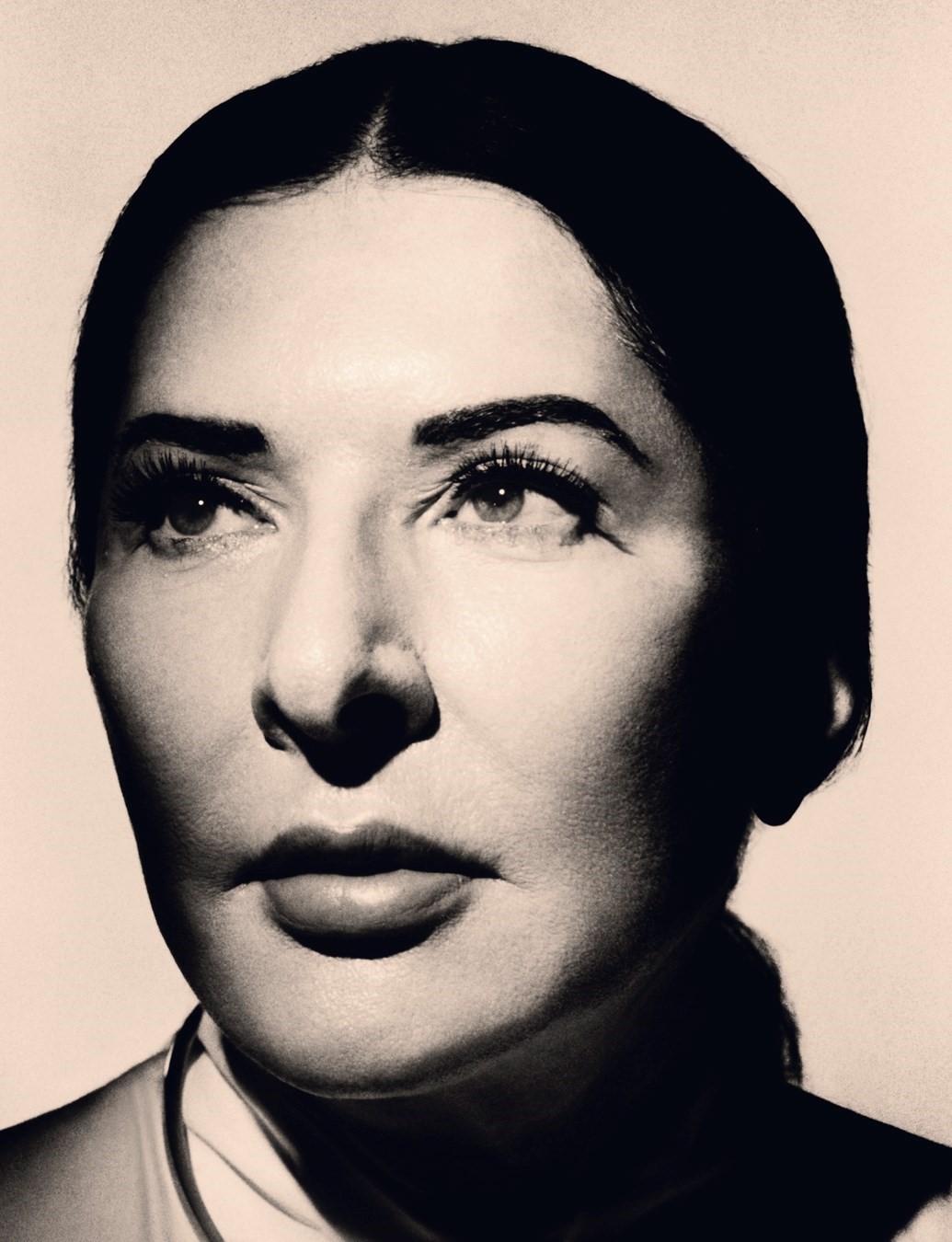
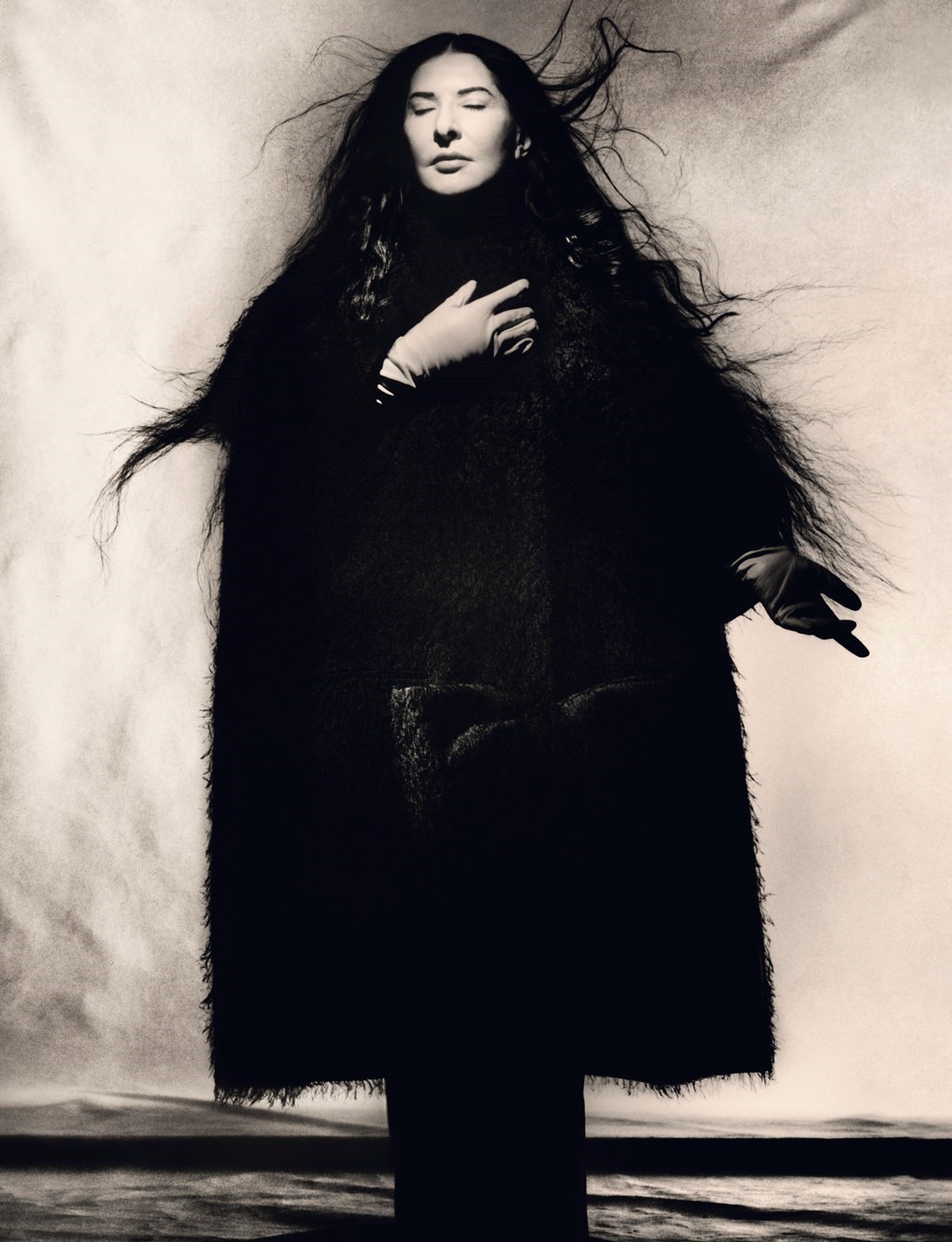
Now I want to ask you about your drawings. Of course, in the beginning there were paintings. You were painting skies and the airplanes in the sky. You stopped painting at some point, but you always continued to draw. I mean, I often saw you drawing in restaurants and when you were travelling on the bullet train. What’s the role of drawing in your practice?
MA: Well, you are about to get my new book. It’s called Nomadic Journey and Spirit of Places. It was just published by Prestel. Can you google it now? I didn’t get a copy yet, but as soon as I get it, I’m going to send you one. I’m very proud of this book, because it’s made on stationery I collected from the different hotels I’ve been to.
HUO: Wow.
MA: But it’s only drawings and collages. It’s a nomadic book. You’re going to get a special drawing by me in it for you. This is my favourite book at the moment. And then I also published another one, it’s coming out with Laurence King and it’s called A Visual Biography. Do you know why it’s different? I always choose the same photographs for my books because, aesthetically, you always lean towards one choice. Katya Tylevich, this is the writer, I made a pact with her that my office would send her 25,000 of the pictures that I never see and I hadn’t approved. Then she picked out her own images and made the book out of them.
And so my book looks different to me. She chose so many things I’d never seen in my life. It’s kind of interesting. It was the same way I worked with Bob Wilson, actually – he gets material and makes his own mix. It’s so refreshing, you give it legally, but you get this fresh mix.
I’m also making a product called The Longevity Concept. The Longevity Concept is a series of drops, for immunity, energy and anti-allergy, and a face cream.
With the rapid development of technology, if we human beings don’t embrace simplicity in our lives, we will be lost. Our brains cannot compete with or follow the algorithms of powerful computers and artificial intelligence. These technologies were originally developed to help us to have more time, to live in the present. What really happened, because of our addictive nature, was that we lost ourselves in new technological possibilities. Our need for consumption allowed us to be consumed and always keeps us hungry for new gadgets to buy.
The result of all this is that we have lost our spiritual centre. Over the course of my entire career I have developed the Abramović Method to help me and others recentre themselves and focus on what is most important – to live in the present, long and healthily.
My idea for The Longevity Concept is to rediscover forgotten rituals and knowledge of the past. It’s done with Dr Nonna Brenner, who developed the concept in Switzerland – they’re all natural products centred around the idea of longevity, for the Royal Academy shop.
HUO: So this is basically your own production line?
MA: Yeah, it’s my own.
HUO: There is a long tradition of artists developing their own products. I mean, Marcel Duchamp had his Rotoreliefs and he went to the fair to present them. Hans-Peter Feldmann had the Thimble Mail – and you now have your own longevity products. I love it. Thank you so much. This was amazing – this is very different from all our interviews, it’s super-special – and I miss you terribly. I hope we see each other the moment you arrive in London.
MA: I love you.
HUO: Love you.
Hair: Tsuki at Streeters using ORIBE. Make-up: Kabuki using CHANEL. Set design: Griffin Stoddard at Streeters. Lighting: Christopher Bisagni. Photographic assistants: Pierre Crosby, John Ciamillo and Colin Barry-Jester. Styling assistants: Bella Kavanagh and Alexa Levine. Set-design assistants: Max Popov and Mischa Langley. Production: Farago Projects. Post-production: Purple Martin
Marina Abramović is on at the Royal Academy from 23 September 2023-1 January 2024. Marina Abramović Institute Takeover is on at the Southbank Centre 4-6 October 2023. 7 Deaths of Maria Callas is on at ENO 3-11 November 2023.
Nomadic Journey and Spirit of Places, published by Prestel, and Marina Abramović: A Visual Biography, published by Laurence King Publishing, are out on 21 September.
This story features in the Autumn/Winter 2023 issue of AnOther Magazine, which is on sale internationally on 14 September 2023. Pre-order here.
